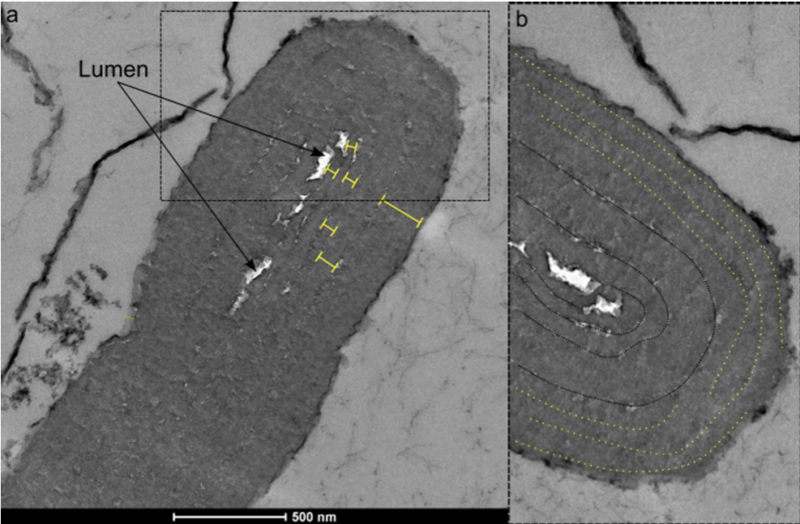
Demoulin, et. al.
It isn’t an exaggeration to counsel that essentially the most important occasion on Earth was the evolution of photosynthesis. The power to reap power from mild freed life from the necessity to scavenge power from its surroundings. With this new functionality, life grew in complexity and invaded new environments, finally reshaping the Earth.
For such a pivotal occasion, we all know remarkably little about it. Tracing the presence of oxygen within the environment suggests photosynthesis advanced at the very least 2.4 billion years in the past, though the rise in oxygen ranges seems to be impressively difficult. Tracing the variations of present-day genes locations photosynthesis’ origin at about 3 billion years in the past. That timing is just like the origin of the photosynthetic cyanobacteria, which each proceed to reside independently and have been integrated into plant cells as chloroplasts.
What we do not have is evident proof of photosynthetic cells of comparable age. A couple of microfossils with similarities to cyanobacteria have been recognized, but it surely’s unattainable to find out whether or not they had been making the proteins that energy photosynthesis. Now, new fossils described by a workforce on the College of Liège push unambiguous proof of photosynthesis again over a billion years to 1.7 billion years in the past.
What’s a thylakoid?
The work depends on the identification of constructions known as thylakoid membranes. These are stacks of disc-shaped membranes that enhance the floor space throughout the cell that may play host to photosynthetic protein complexes. Not all present-day cyanobacteria have thylakoid membranes, however they’re current within the chloroplasts of plant cells.
To seek for thylakoids, the researchers obtained small cell-like our bodies from sedimentary rocks in a number of websites. They made ultra-thin sections of those rocks after which carried out electron microscopy to resolve a few of the particulars within the inside of the cells. This allowed them to select up options that had been only some tens of nanometers throughout.
Two of the websites had cells with multi-layered inside membranes which might be typical of thylakoids. These had been the McDermott Formation in Australia and the Grassy Bay Formation in Arctic Canada. The latter is over a billion years outdated, which is considerably older than any earlier proof of thylakoids. However the McDermott Formation is over 1.7 billion years outdated, which implies the fossil proof for these constructions now goes again 1.2 billion years sooner than it had.
On the identical time, obvious cyanobacteria fossils from the Democratic Republic of the Congo which might be a billion years outdated should not have indications of thylakoid membranes. As famous, there are nonetheless species of cyanobacteria round immediately that lack these constructions, so it seems these lineages have been separate for fairly a while.
Going again in time
Whereas necessary in its personal proper, the findings are principally important for his or her implications. Molecular knowledge means that the cut up between the 2 teams of cyanobacteria—with and with out thylakoids—goes again even earlier. There have additionally been some proposals that the evolution of thylakoid membranes gave photosynthesis the enhance wanted to set off the Nice Oxygenation Occasion, the place the environment’s oxygen ranges rose considerably for the primary time.
By exhibiting it was attainable to establish thylakoid membranes regardless of the immense age, the researchers behind this work present a powerful impetus to test for his or her presence across the time of key evolutionary occasions. The fossil proof may finally meet up with the genetic and chemical proof with regards to the evolution of photosynthesis.
Nature, 2024. DOI: 10.1038/s41586-023-06896-7 (About DOIs).

